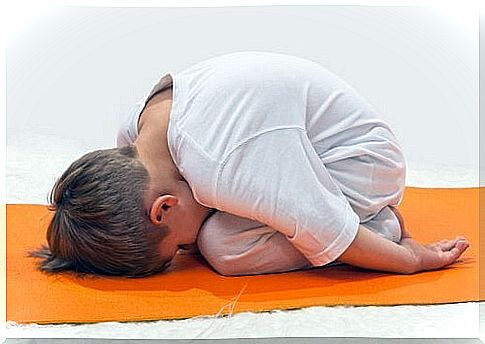Turtle Technique: A Method Of Self-control

The turtle technique is a tool for children to control their self-control. It also deals with children whose behavior is beyond control.
Many parents today are confused about what is the best way to raise them. They are afraid of imposing too many restrictions.
At the same time, they know that it is important to set boundaries. This ambiguity gives rise to a lack of self-control in children.
Lack of self-control in young children can generally be seen in typical outbursts of anger. The children kick and scream uncontrollably.
Sometimes they can wear out their parents to the point that they get exactly what they want. The turtle technique helps you to avoid just this.
Turtle technology and self-control
Many parents describe their children as hyperactive, but most of the time they are just anxious or uncomfortable.
Lack of upbringing confuses them and makes them anxious. They express their anxiety through unpredictable behavior, disobedience and mood swings.
If that happens, turtle technology will be an effective way to promote emotional control. It consists of four steps:
Teach the child to retreat into its shell
You can explain the turtle technique to your children with a story about a little turtle who had problems at school. She angrily responds back to her teachers and gets outbursts when her friends tease her.
Her teacher shows her that when she is very angry she can retreat into her shell and count to ten. The little turtle follows the advice and all her problems are solved, as if it were pure magic.
You can teach your child to take on a turtle position, just like in the story. It should crouch down and put its head in its arms, as if it has a shell to crawl into.
Turtle technique is a physical, concrete way to teach children emotional control.

Relax your muscles
While the baby is in its shell, it should breathe very deeply. Tell your child to concentrate on breathing in and out slowly.
It helps the child to relax in their muscles and relieve the muscle tension that comes with anger.
Look for solutions
The child should think about what to do when they come out of the shell. It means thinking about what solutions are available to solve the problem.
You can also make suggestions, but your child should make the final decision.
Get out of the turtle position
Once your child knows how to deal with the situation, it’s time to get out of his shell. The child should move out of the turtle position and solve the problem in the way it determined.
Practice the technique until your child has understood it. Your child will understand that it is much more effective than having an outbreak.
The benefits of turtle technology
The turtle technique is especially effective for very young children. It is generally suitable for children between 3 and 7 years.
However, a similar mechanism can be used with older children. Adjust the steps according to their interests and preferences.

The most important advantage of the turtle technique is that children learn self-control. However, the method also has other advantages:
- Self-confidence. If your child feels that he owns his emotions, he will also have more control over his behavior. It gives the child better self-confidence.
- Learn to trust their own reasoning. Your child will gradually understand that it is always best to think before acting. It will notice that the actions are more effective when it does, and it is an important lesson for adulthood.
- Reduces anxiety. If your child feels more in control, he or she will feel more secure. By developing a more independent behavior, it will also have less conflict in its relationships.
- Better self-esteem. The turtle technology enables children to develop a better perception of themselves. This in turn leads to better self-esteem.
- Greater responsibility. It is your child who evaluates and chooses the solution. It helps children understand that they are responsible for their actions.









